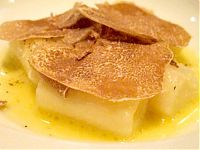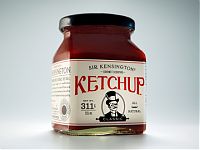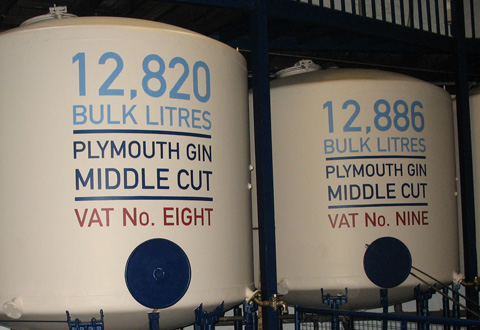Gin from the Past
by Jack Robertiello
March 31, 2008
Gin’s lingering association with tonic and lime, sultry weather, and perspiring glasses is getting a shake up lately, as more and more bartenders rock their drinks with the original flavored spirit. It’s about time. Gin drinkers hate when you point out that their favorite spirit could be considered the first flavored vodka, but really, how else do you account for gin’s easy mixability? Today, as most gin drinkers totter off to the “…and over” age demographic, marketers are struggling with making the juniper-spiked spirit relevant again.
Plymouth was a typical victim of the Dark Ages of cocktails, when Harvey Wallbangers and wine coolers strode the earth. Bounced around from one bumbling English booze company to another, in the U.K., it manages to remain the number one premium gin. In the U.S., however, it’s been rescued and relaunched a couple of times and the quantity sold is very small indeed.
Sean Harrison, Plymouth’s matter-of-fact master distiller, will quite gallantly aver during tastings that there’s a gin for everyone and that what you like is really just a matter of taste. De gustibus and all that. It’s inarguable, but meaningless, especially in the face of some of the unbalanced modern gins being offered today.
What Plymouth offers in the middle of the gin flavor spectrum isn’t moderation; it’s a supremely well-knit gin, balancing sharp citrus peel and tangy juniper with the earthiness of orris and angelica, not to mention the pop of cardamom and coriander. It’s clear why bartenders like it for experimenting with new cocktails; bracingly junipery gins like Beefeater can dominate a drink (though it remains my favorite in a Negroni), while the more ephemeral gins, like Bombay Sapphire, can fade when matched against more assertive flavors. These and other gins have many acolytes among Martini lovers and gin and tonic fans — in fact, I count myself among those frequently charged with gin polyamory.
Older brands typically incorporated fewer botanicals — those flavor agents that give gin its bite and tang. But as trade expanded with the spice islands of the Far East, recipes became more exotic. Modern gins like Bombay Sapphire, for example, will use a dozen or more botanicals, such as cassia bark, cubeb berries, liquorice, bitter almond and grains of paradise.
In gin’s heyday, those brands made outside London were known for being less junipery, and Plymouth also gained a characteristic softness from the water that flows through the nearby moors of Dartmoor. Each gin is made with its own specific recipe and house style — Plymouth’s 200-year-old version calls for steeping the seven botanicals in alcohol. The result is heated until a pungent blend of alcohol and botanical oils percolates up the elegant swan’s neck of the Plymouth still at the ancient Blackfriars distillery, in which some form of alcohol was first made in 1650s or thereabouts. It’s then cooled, condensed and corrected to around half its original alcoholic strength with Dartmoor water.
An odd fact about English gin: English law forbids the gin maker from actually distilling his or her own original product, so all gin companies start with someone else’s distilled spirit before adding flavor through infusion or maceration. It might be why one of the best-known and most successful brands, Bombay, doesn’t have its own distillery — G&J Greenall, maker of a well-known brand in the U.K., crafts the product for them in Cheshire (No wonder that cat was smiling).
Nothing wrong with someone else making your product to order — just ask Sam Adams beer lovers. But it does cut down on the breadth of story-telling marketers can spin to journalists; maybe it’s another reason gin has been so neglected in the cocktail-crazed 21st Century — all it’s got is taste.
Jack Robertiello writes about spirits, cocktails, food, wine and other good stuff.




















